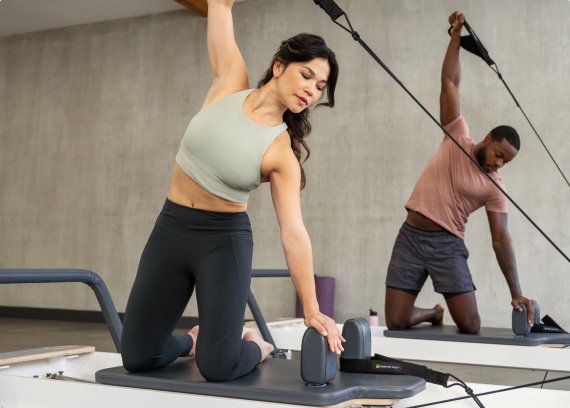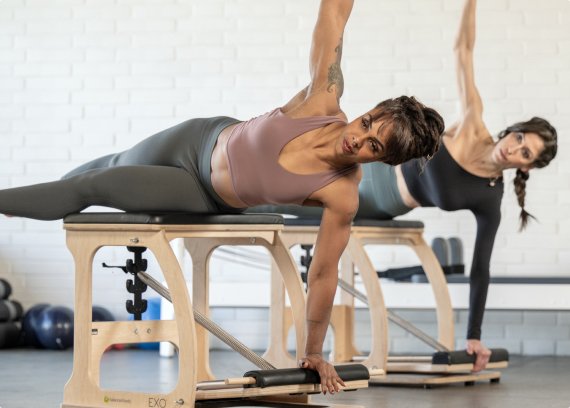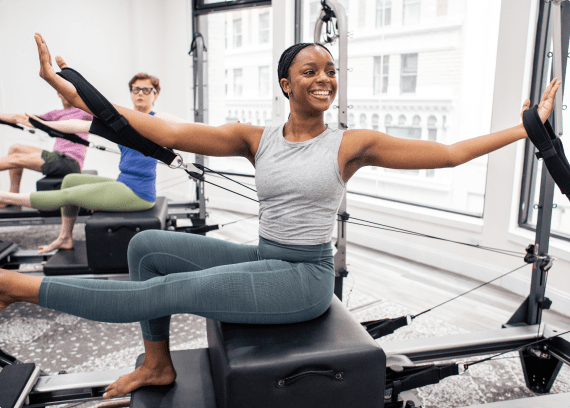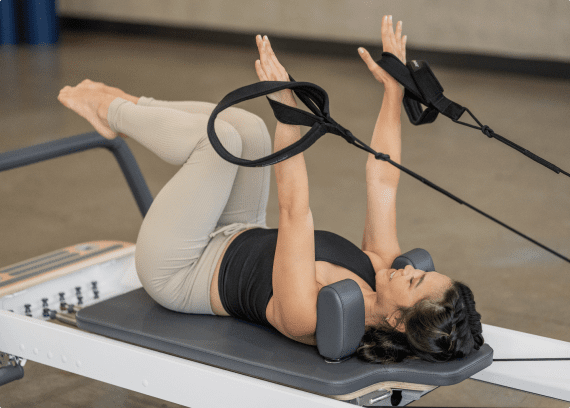Tips for Your New Pilates Instructors
Tips for Your New Pilates Instructors
By Ken Endelman, Founder and CEO of Balanced Body
As originally seen in the December 2007 issue of Club Solutions Magazine
For many clubs implementing a Pilates program, the best solution for finding instructors is to train existing staff.
It is usually a great fit, as they already know your members, your club dynamic and your club philosophy. And
new on-site educational programs get them trained and class-ready more easily and quickly than ever before.
It is important to realize that although extremely effective, Pilates is a complex and nuanced form of fitness.
Pilates has many layers that take practice to thoroughly understand. It’s definitely different than teaching a
group spin or step class. Your new instructors will be dealing with different body types, equipment and will
need to know how to modify the exercise to best meet the needs of each participant. Not doing so can lead to
member dissatisfaction, or worse, possible injury.
That can seem a little daunting for a new instructor. So I asked Nora St. John, our Education Program Director
for Balanced Body University®, if she had any tips that she could give club management to help their fledgling
instructors. Here are some of her suggestions:
1. Get a Mentor
“When they complete their instructor training program they’re at the beginning of the learning journey, not the
end,” says Nora. “If they have the opportunity to work with more experienced teachers, have them do it. They’ll
learn so much from those who have been instructing for long period of time.”
Ask your instructors to find a mentor that they can ask questions of or problem-solve with. If you have more
senior Pilates instructors on staff pair them up with your new instructors. The key is not to make them feel like
they are all alone out there.
2. Pre-screen class participants
The beauty of Pilates is that the exercises can be modified to meet the needs of each and every participant. But
with a class full of different body types, conditions and abilities, that can be tough. “Your instructor should meet
with your participants before they start a class to see if they have any physical conditions or limitations that
they should be aware of,” Nora says.
“It’s also a good idea to have group participants, particularly group Reformer participants, take a private session
or two before starting the class so that the instructor can gauge that member’s ability, and the member can
become familiar with the equipment.”
3. Learn how to market your classes
“I’ve seen many instructors – new and old – just come to a class, teach, and then leave. For any Pilates
program to be successful in the long run, that won’t cut it,” says Nora. “Instructors are ambassadors to their
program and they need to be active in that role. As such they need to learn how to retain their current
members and attract new ones.”
This means getting feedback from class members and using that data to create sessions that keep them
coming back. It also means learning how to conduct effective demos both inside and outside of the club to get
new members interested.
4. Keep programming fresh
In the same vein as the last point, one of the best ways to keep your members interested is to keep your
programming fresh and fun. “You can’t keep doing the same routines over and over. Eventually people will get
bored,” states Nora. “Your instructors will need to keep things fresh and that’s why it’s so important for them to
continue their education.”
Some simple programming tips include adding props like balls or resistance bands to a class, or creating classes
for specific member demographics like Pilates for golfers or Pilates for runners
5. Trust in the system and have fun
Nora has seen a lot of new instructors come out of their training program and then suddenly think they need
to change everything. She suggests staying the course: “Pilates is commonly structured is a system of exercise.
Tell them to trust both the method and themselves. If they have been well-trained they will have a good structure
or base in which to start, and if they follow what they’ve been taught their class participants will leave
having had a good and effective workout.”
Above all she says, tell them to have fun. “That’s key – make sure they are enjoying what they are doing.
Suggest that they find something to like in each task they are performing that particular day.”
Ken Endelman is Founder and CEO of Balanced Body Inc. Ken began his career as a designer and craftsman of fine custom furniture – a background apparent in every piece of hand-finished
equipment the company makes. Since the early 1970s, Ken Endelman has updated Joseph Pilates’ equipment with state-of-the-art engineering, materials and technology, many of which have become industry standards. The company has been awarded twenty-four U.S. patents, with more pending. Balanced Body Inc. continues to actively promote Pilates to the fitness industry, the medical profession and the media.
This article was originally seen in the December 2007 issue of Club Solutions Magazine.






